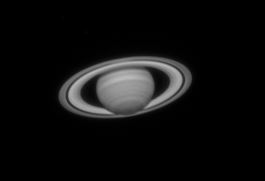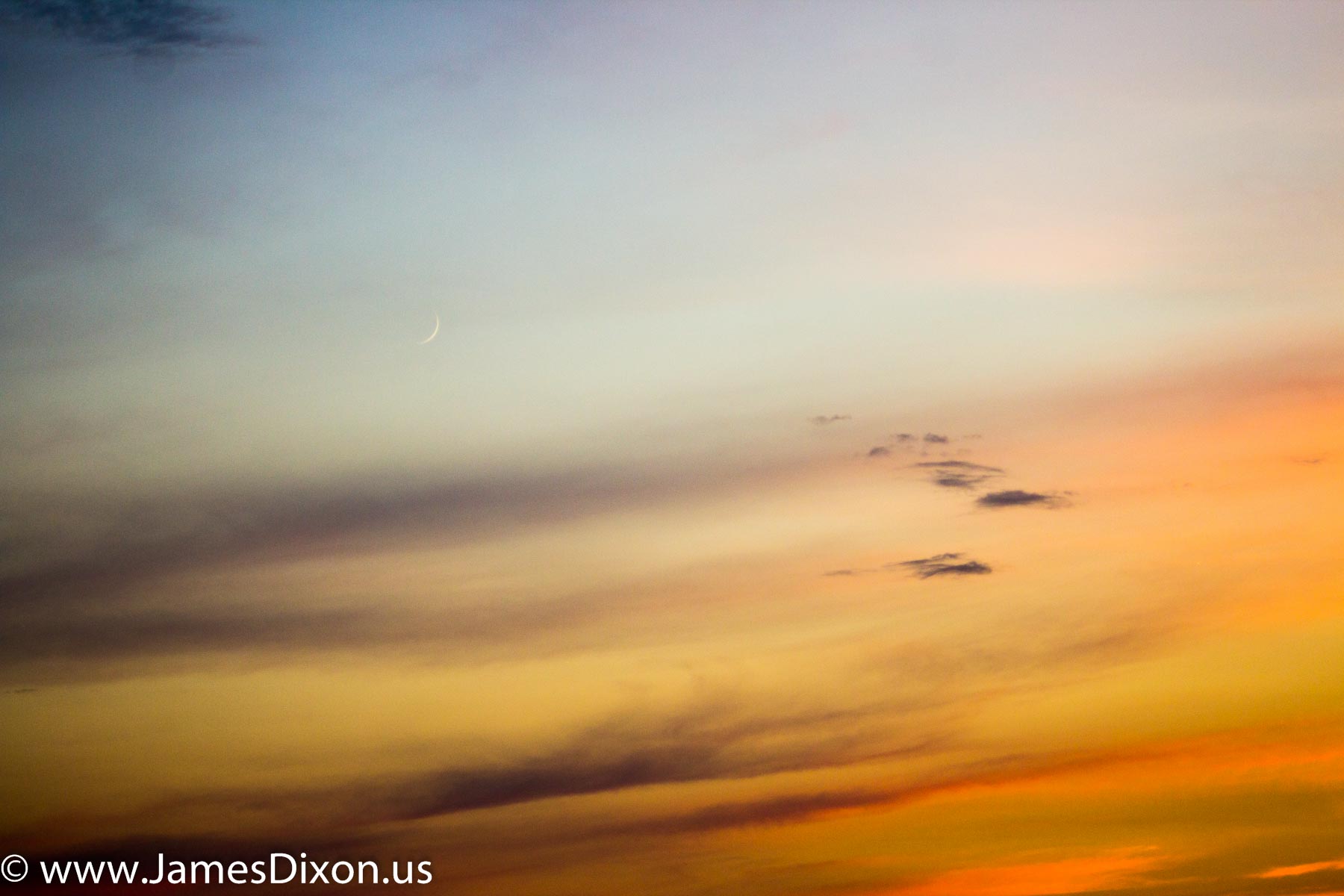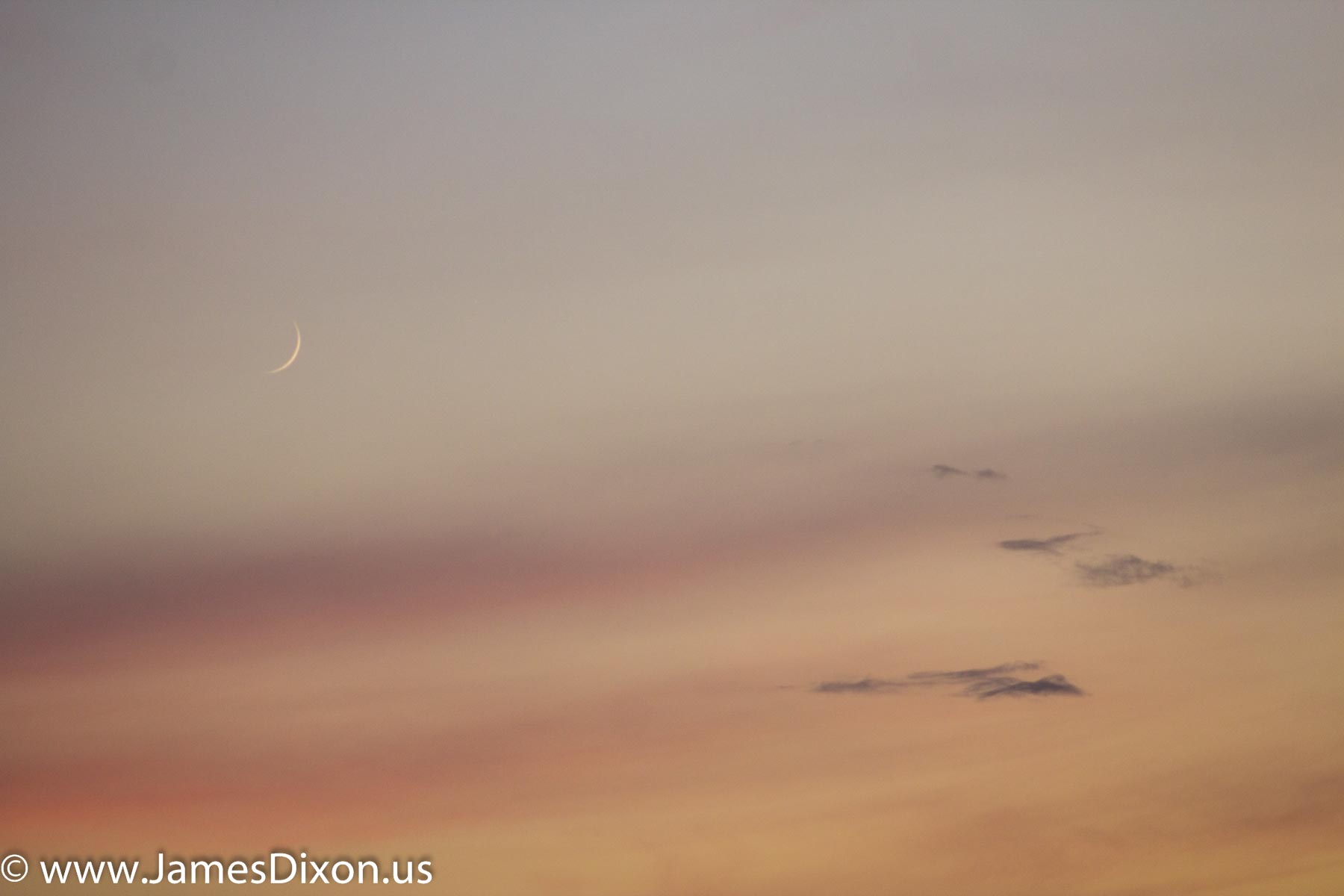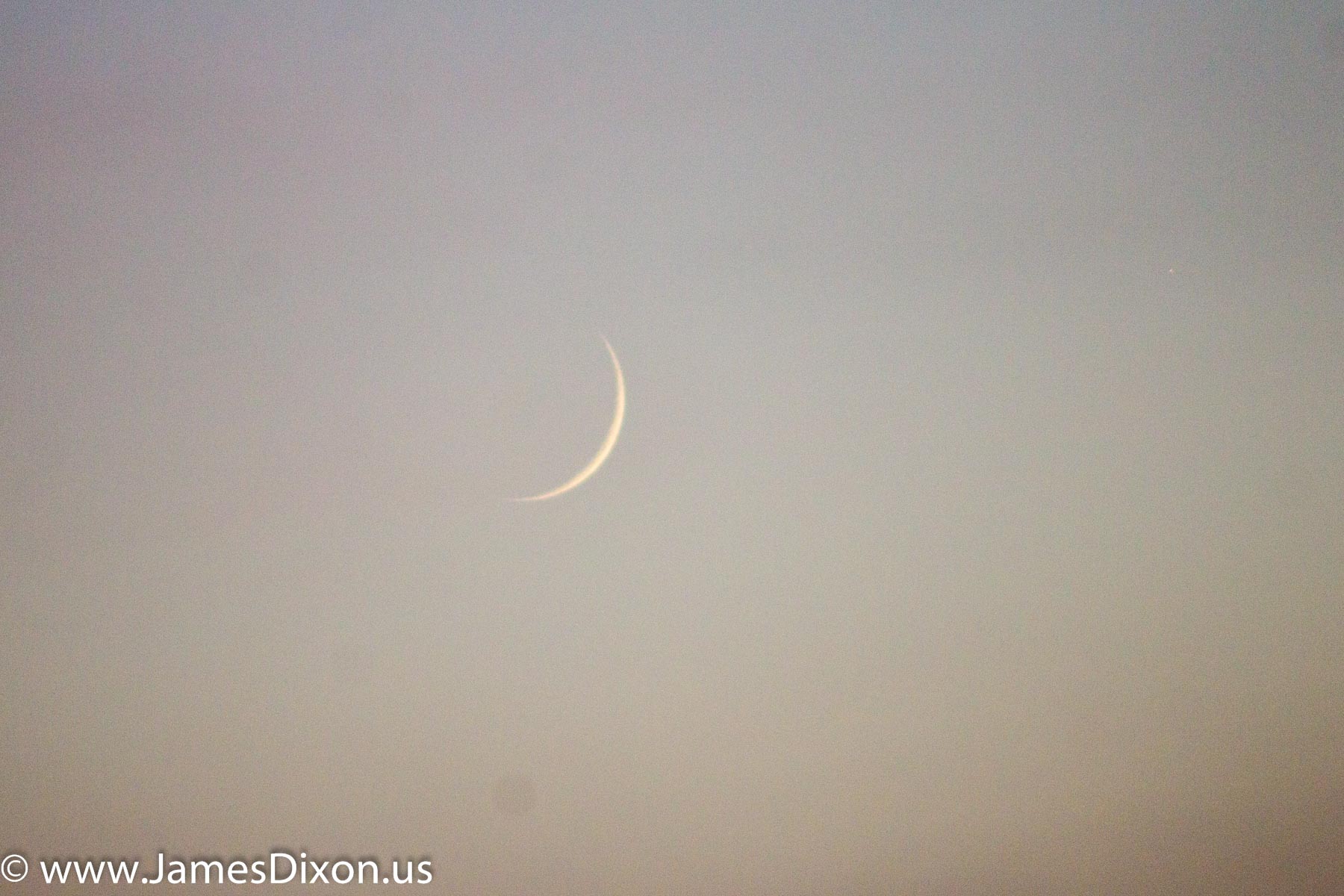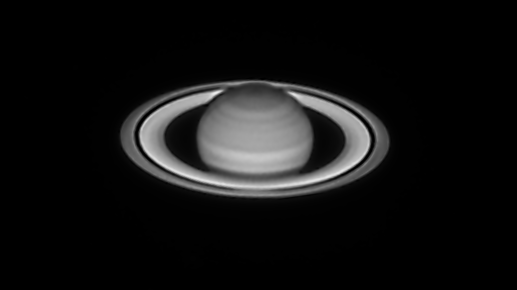Here is a young moon, just three days old with the planet Jupiter which is rapidly heading away from us and toward the far side of the Sun. Canon EOS Rebel 5, 300mm lens, 1/60 second, ISO – automatic, hand-held leaning on car.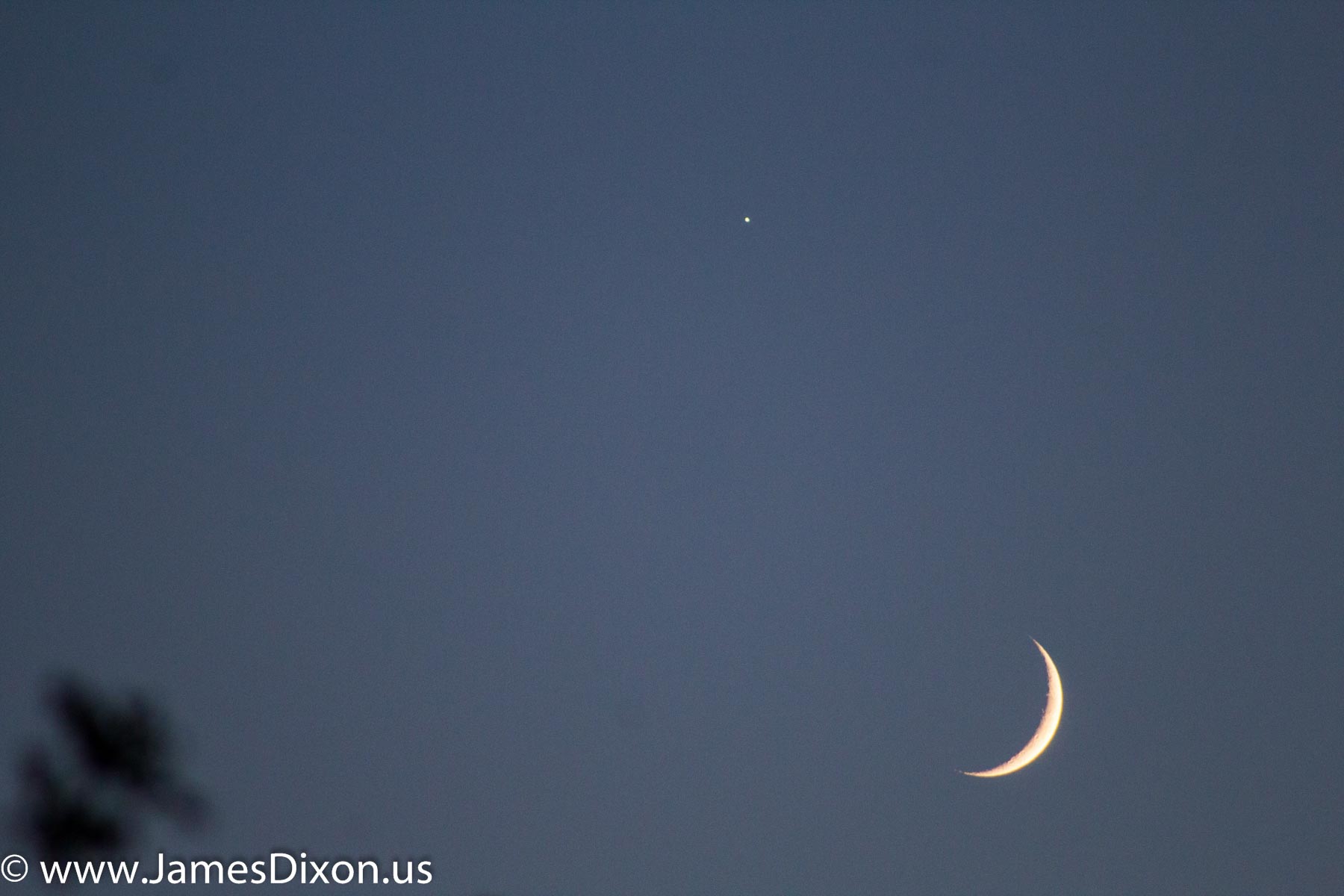
Two Day Old Moon August 4, 2016
Mars & Saturn 6/11/2016
After a few middling shots of Jupiter with the color ASI120MC, I decided to go gray with his brother the monochrome ASI120MM using color filters. Mars was first and I chose red since it supposedly shows more detail with a red filter. I stuck with prime focus as the seeing wasn’t good enough for a barlow. I think things turned out pretty good. This is a stack of the best 20% of 10,000 3ms frames.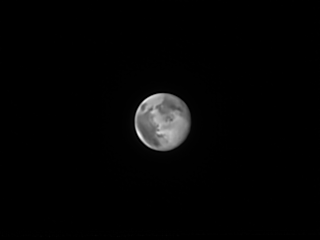
Next up was Saturn, I stuck with red because it was in there. I was so impressed I stuck with red. I did later try a light blue filter but it blocked so much light I went back to red. There was so much detail I may just switch to monochrome with a filter wheel. The two cameras have the same number of pixels but since one is color it effectively has a third the pixels of the other. This was a stack of 20% of 4000 37ms frames, note the exposure was almost 10x that of Mars.
Now check this out, here is how Saturn came out after stacking with no other refinements. When I saw this I knew I was on to something.